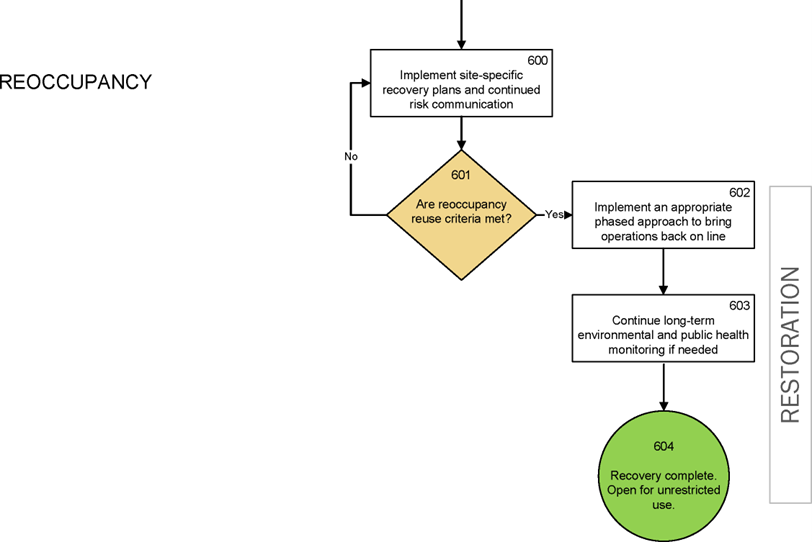The detailed flow chart beginning on the page below highlights the critical steps that characterize the response to and recovery from a nationally significant or large-scale chemical incident.
Notification
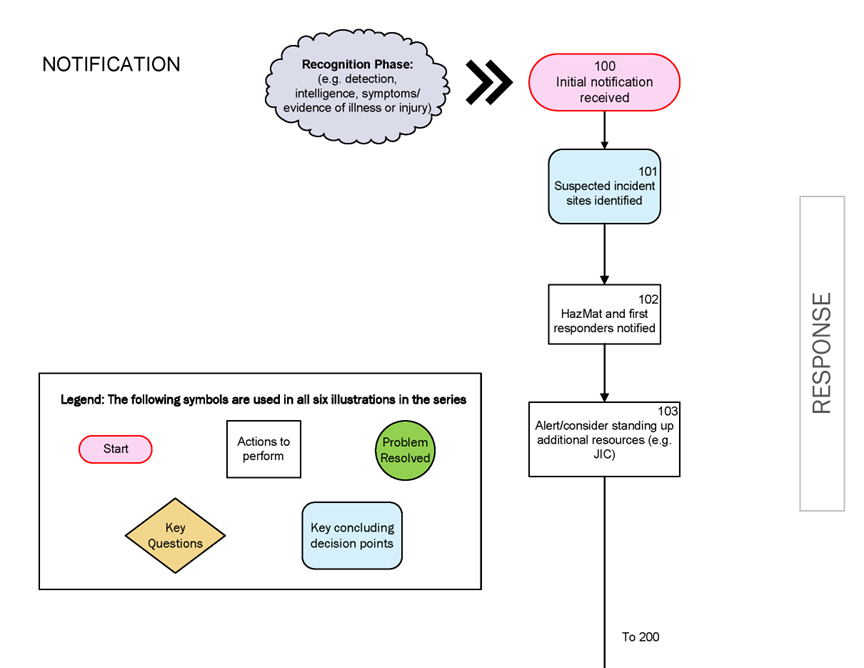
First Response
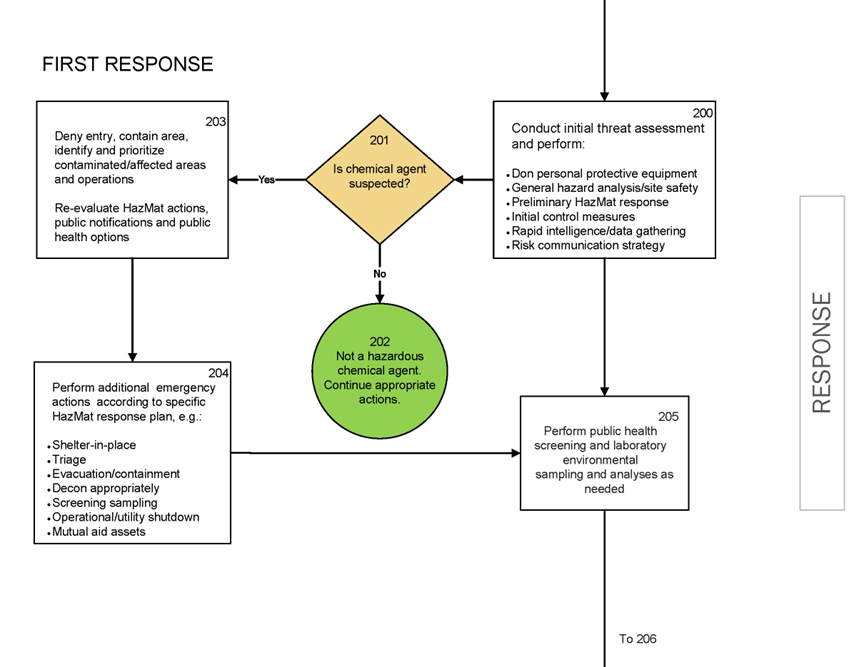
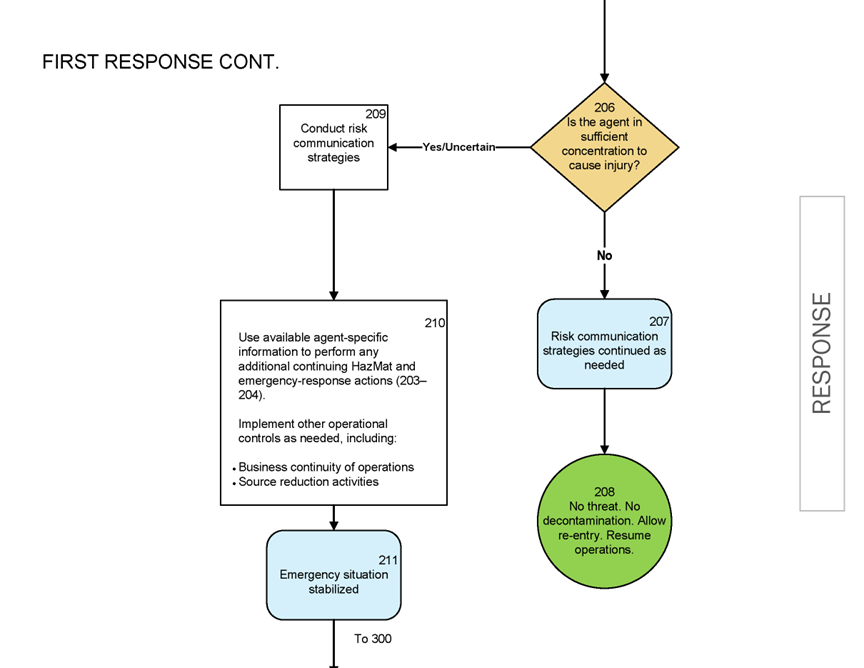
Characterization
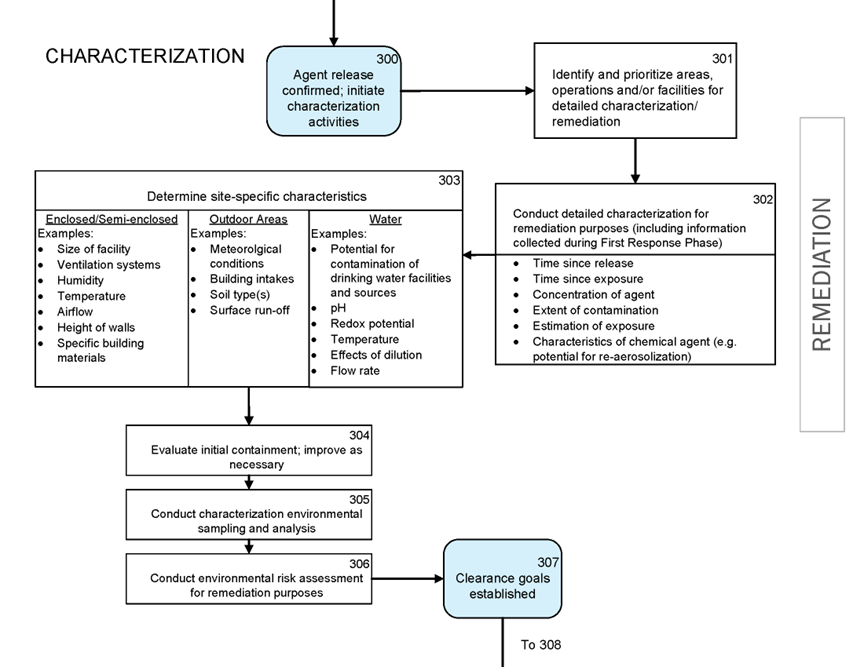
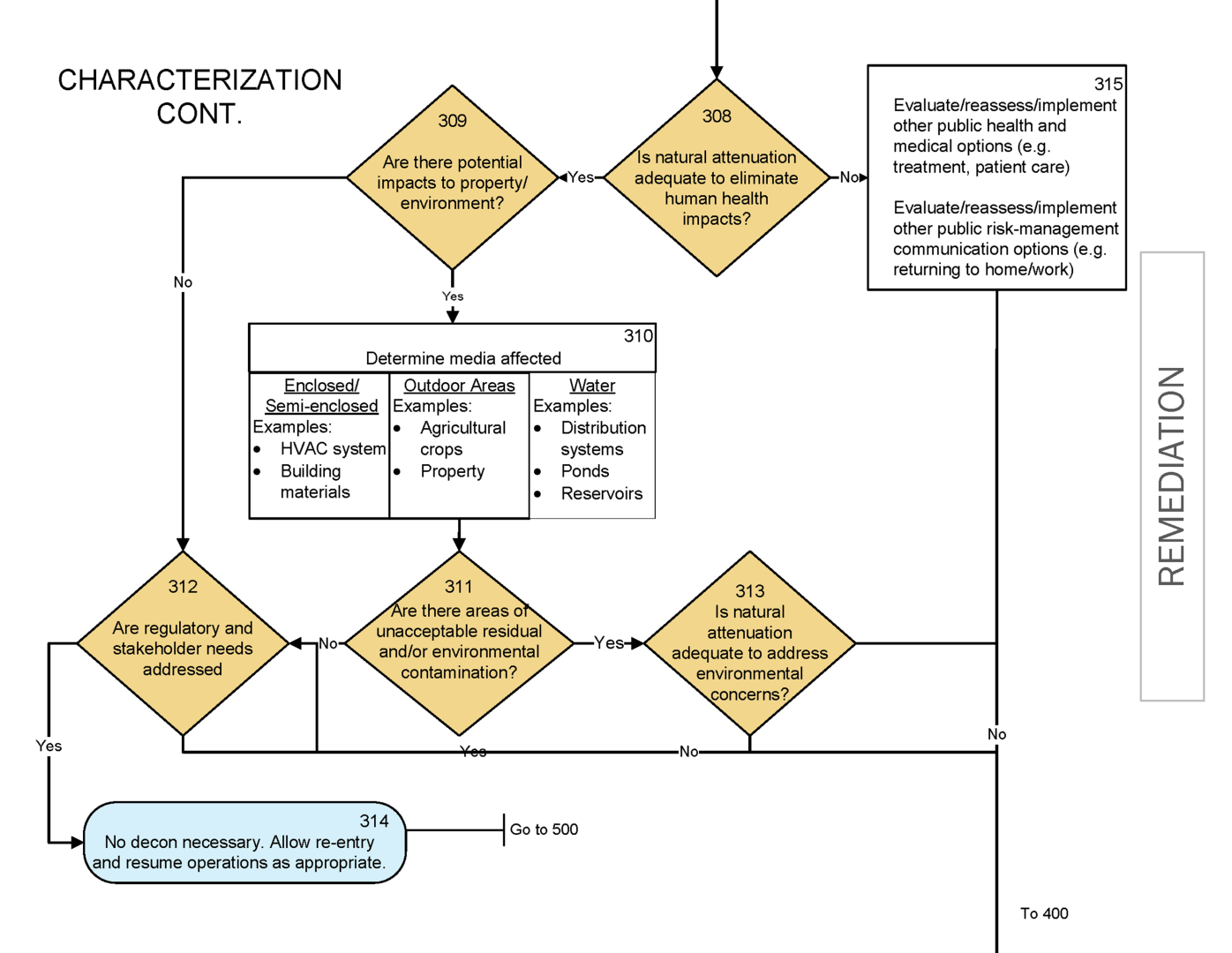
Decontamination
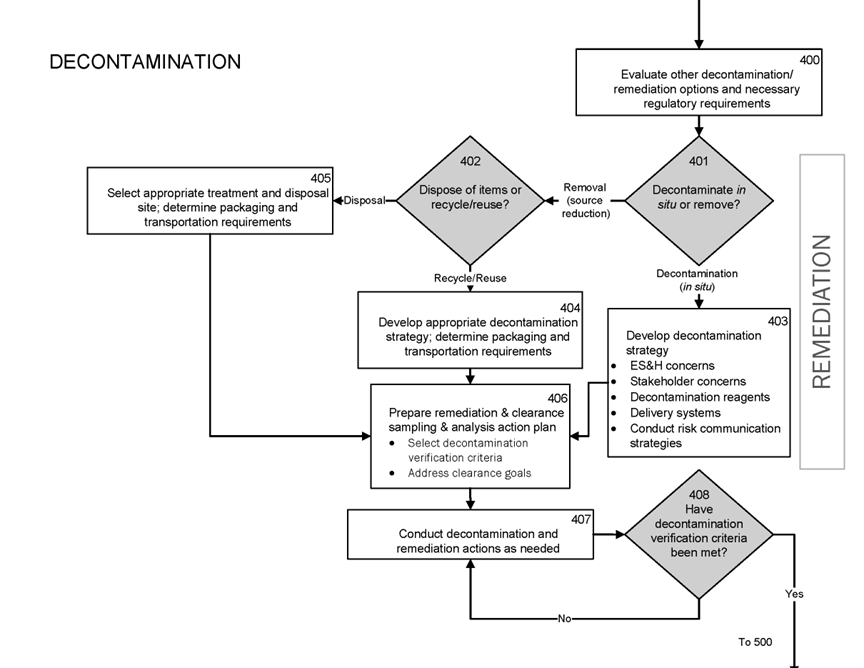
Clearance

Reoccupancy
